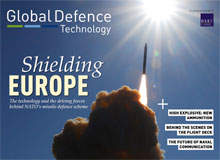
NATO is assembling a missile defence shield in Europe to protect member states from potential attacks by enemy nations. Despite the recent, more collaborative approach supported by the US under the Obama administration, the size of the project and the international spread of resources require both technological innovation and careful political negotiation to bring it together. In this issue we take a look at the technological and political driving forces behind the initiative.
We also look at innovations in ammunition and fuses, find out what it takes to keep a flight deck running smoothly, and investigate how new operational requirements are shaping the future of naval communications and networking.
To read your free copy of this issue, click here.
Topics featured in this month’s issue include:
Army
Current military engagements are driving technological advancements in all spheres of equipment. We investigate one area where this is particularly evident – ammunition and fuses. We also look at weapon location systems and find out why they are a vital asset for troops on the ground and how they can be applied in the field.
Read more in the army section of this issue.
Air Force
On an aircraft carrier’s flight deck, smooth and efficient operation of fighter squadrons is the trump card. We find out why a combination of equipment, procedures and training is crucial to keep an air armada ready for take-off. We also speak to leading emergency and safety equipment suppliers about their products and how they benefit the US Air Force.
Read more in the army section of this issue.
Navy
We investigate how new operational requirements, such as asymmetric warfare in littoral and subsea zones, are shaping the future of naval communications and networking, and look at some of the new system being developed for navies. We also take a look at equipment and technology that can be used to protect port security.
Read more in the army section of this issue.
Next Issue
When disaster strikes and causes a humanitarian crisis, the response must be immediate and organised. We investigate what armed forces can do in the area of humanitarian assistance, and why coordinating a response quickly in challenging conditions requires decisiveness and military precision.
We also look at the evolution of ruggedised computer equipment for the front line, size up the latest stealth aircraft technology, and find out how the naval arms race in the Asia-Pacific region has prompted new developments in submarine detection and anti-submarine warfare.
Digital Magazine FAQ
The digital magazine is viewable on any computer with Flash Player installed. It is also viewable on mobile devices, iPhones and iPads though some features and videos will be disabled.
To read the latest issue, click here.




